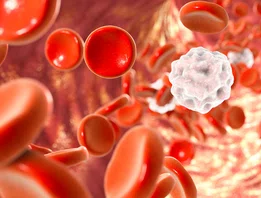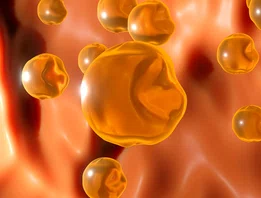


precision medicine
From Paralysis to Recovery
Combining Rehabilitation and Spinal Cord Electrical Stimulation
Combining Rehabilitation and Spinal Cord Electrical Stimulation

Dimitry Sayenko, MD, PhD
A combination of transcutaneous electrical spinal stimulation (TSS) and task-specific upper limb rehabilitation can potentially restore motor function in individuals with upper limb (UL) paralysis due to cervical spinal cord injury (SCI) or cerebral stroke—as demonstrated in a study by Dimitry Sayenko, MD, PhD, Paula and Joseph C. "Rusty" Walter III Chair in Neuromodulation in the Center for Neural Systems Restoration and Associate Professor of Neurosurgery.
The study was published in Topics in Spinal Cord Injury Rehabilitation, 2023.
The global economic burden of SCI and stroke is significant and growing. This is the first study that demonstrates improved grip strength after stroke and could pave the way toward recovery after UL paralysis.
UL paralysis (arm and hand paralysis) can result from neurological diseases, brain injuries, spinal cord injuries or stroke. Since UL paralysis disrupts independence in an individual’s daily life, a systematic examination of methodologies that can promote functional UL recovery and enhance the quality of life of these patients is a crucial step in managing UL paralysis.
From the patient’s perspective, the experience of recovery after paralysis is priceless.
Cervical SCI is typically the most severe form of spinal injury. It entails injury to the top seven vertebrae (C1- C7) in the neck which are closest to the brain. Although the mechanisms of how cervical SCI and stroke lead to UL paralysis differ, TSS combined with rehabilitation can aid in the recovery process.
TSS is a promising, non-invasive neuromodulation technique that can potentially modulate the excitability of spinal circuits and has been used to improve voluntary motor functions. However, the mechanisms underlying how electrical neuromodulation leads to improved UL functions are unclear.
This study presents preliminary evidence from individuals with spinal cord injury and stroke that continuous TSS delivered over the cervical spinal cord, in combination with task-specific hand grip training, resulted in notable improvements in maximum hand grip strength in the trained upper limb. To our knowledge, this is the first demonstration of TSS modulating the cervical spinal networks to specifically improve impaired grip strength after stroke.
Dimitry Sayenko, MD, PhD
Paula and Joseph C. "Rusty" Walter III
Chair in Neuromodulation
Center for Neural Systems Restoration
and Associate Professor of Neurosurgery
Spinal electrical neuromodulation alone has been shown to produce positive results in UL motor recovery in individuals with cervical SCI or stroke. However, the combination of TSS and hand grip training and its potential effects on sensorimotor functions has not been investigated thoroughly. Sayenko hypothesized that combining these two in cervical SCI or stroke populations would enhance hand function beyond what is seen in participants receiving TSS alone or hand grip training alone.
“This study presents preliminary evidence from individuals with spinal cord injury and stroke that continuous TSS delivered over the cervical spinal cord, in combination with task-specific hand grip training, resulted in notable improvements in maximum hand grip strength in the trained upper limb,” said Sayenko. “The results of our case series showed that individual interventions, either TSS or hand grip training, exhibited limited effectiveness in improving grip strength. Furthermore, to our knowledge, this is the first demonstration of TSS modulating the cervical spinal networks to specifically improve impaired grip strength after stroke.”
Study participants included four individuals with cervical SCI and two individuals with cerebral stroke. The SCI participants had a chronic injury with the neurological level of injury at or between C4-C7. The stroke participants had either ischemic or hemorrhagic stroke. This subject-blinded, cross-over design study included two four-week interventions with sessions performed thrice a week. Sessions entailed repetitive proximal and distal task-specific movements with or without subsequent hand grip training. Sayenko and his team evaluated hand grip force using a handgrip dynamometer and visual feedback from electromyography.
Copyright © 2023 American Spinal Injury Association
Figure 1. Study design and experimental setup. (A) Study design included 12 training sessions incorporating grip training performed in the presence of sham or actual transcutaneous electrical spinal stimulation (TSS) interventions performed as well as four tests and 2 weeks of washout period. The circles in the figure represent the training sessions and are labeled with numbers. (B) The experimental setup involved the use of a handgrip dynamometer and visual feedback from electromyography (EMG) activities and grip force signals during training. The cathode electrode was placed between the C6 and T1 vertebrae to target forearm and hand muscles based on the motor pools distributions.
For this study, Sayenko used neurophysiological stimulators conventionally utilized in research. Self-adhesive electrodes connected to a constant-current stimulator from Digitimer Ltd, UK were placed on the skin to deliver TSS. Wireless surface electromyography electrodes from Trigno Avanti (Delsys, USA) were used to record signals from four UL muscles (flexor carpi radialis, extensor carpi radialis, first dorsal interosseous and abductor pollicis brevis). Participants were verbally encouraged to apply maximum grip force during testing of the maximum voluntary contraction.
Sayenko added, “TSS has the potential to improve hand control, hand grip force production and dexterity in individuals with SCI. TSS combined with task-specific hand grip training may involve different and perhaps synergistic processes leading to more effective reorganization of neural circuits. Further research is needed to determine the optimal stimulation parameters to target specific motor pools and to engage movements in specific upper limb joints of interest throughout the training process.”
Currently, Sayenko and his team are engaged in several clinical trials to test the efficacy of TSS in regaining various UL movements after paralysis. Further investigations along the lines of the findings in this study, with a larger sample size, would enhance our understanding of SCI pathophysiology and effective therapies that promote neuronal recovery and patient outcomes.
Jeonghoon Oh, Michelle S Scheffler, Erin E Mahan, Shane T King, Catherine A Martin, Jenny Dinh, Alexander G Steele, Marcia K O'Malley, Dimitry G Sayenko. Combinatorial Effects of Transcutaneous Spinal Stimulation and Task-Specific Training to Enhance Hand Motor Output after Paralysis. Top Spinal Cord Inj Rehabil. 2023 Fall;29(Suppl):15-22. doi: 10.46292/sci23-00040S.
This work was in part supported by the NeuroSpark Seed Funding Program (20130009) and Craig H. Neilsen Foundation (733278).
September 2024
Abanti Chattopadhyay, PhD
Related Articles








